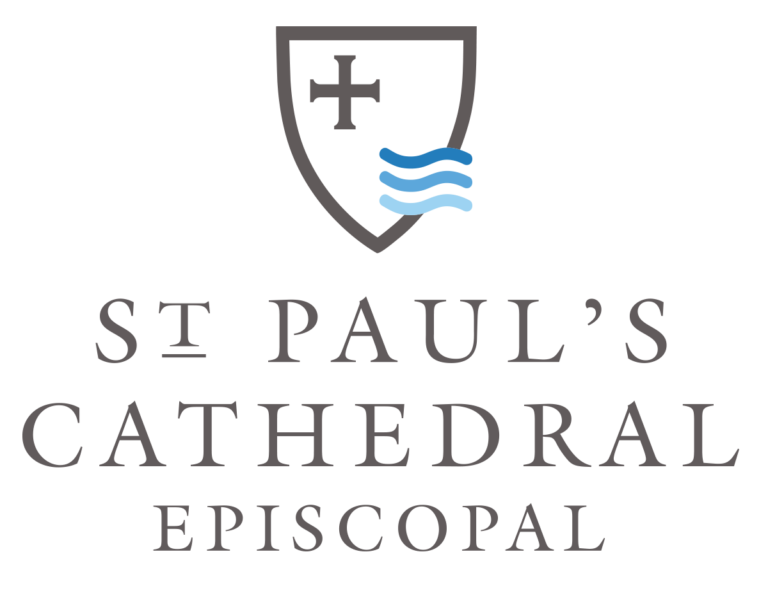Hello St. Paul’s,
Last weekend we held our annual Chapter retreat, where we oriented new members and started to create a functioning community of leaders for the year ahead. A question raised during the day reminded me that there are plenty of people at St. Paul’s who may not be fluent in our Episcopal jargon, especially as it relates to our hierarchy and polity. So here’s a brief primer on the structure of the Episcopal Church.
The local expression of the Episcopal Church is the congregation. This may be a mission congregation, which is traditionally defined as a congregation that is not financially self-supporting, or a parish. St. Paul’s was a parish church from its founding until it became a cathedral in 1985, and our bylaws still reflect that identity.
The governing board of a congregation is known as a bishop’s committee, if it’s a mission, or a vestry if it’s a parish, or a Chapter if it’s a cathedral. These boards are elected by the congregation itself, usually for a fixed term. Two lay leaders or wardens are elected or appointed – the mechanism varies from diocese to diocese. In the case of San Diego, the wardens must be members of the vestry or Chapter, and at St. Paul’s the Chapter elects the people’s warden while the dean appoints the dean’s warden. The Chapter’s principal function is to provide the materials needed for worship and other ministries, including the buildings of the church, and to work with the clergy to encourage and build up the congregation in its ministry.
A mission or parish generally has at least one priest attached, sometimes working part-time if there isn’t sufficient income to support a full-time position. The governing board of the congregation hires the priest, with concurrence from the bishop. A deacon sometimes assists, but deacons are usually not paid for their ministry. Deacons are usually assigned to a congregation by the bishop.
Each congregation belongs to a diocese which is headed by a bishop. Dioceses are geographic entities that, in this country, often follow state lines. So we have the dioceses of New Hampshire and Connecticut, for example. In a large state such as California we have several dioceses, and our own diocese includes one church in Yuma, Arizona, simply because it is closer to San Diego than to Phoenix.
The governance of a diocese is divided in three: first there’s the bishop, who is elected from a slate of priests and other bishops by all the clergy of the diocese plus lay delegates from each congregation: clergy and lay must agree on one candidate. The Bishop has the last word on ordinations and clergy discipline and guards the unity of the church. There may be one or more bishops in assisting roles, elected or appointed. Second, there’s the Standing Committee, which is a group evenly divided between clergy and lay, elected to a term by the clergy and lay delegates at the annual diocesan convention. The Standing Committee has responsibility for a broad range of ecclesiastical matters, including approving people for ordination and advising the Bishop. It helps the Bishop guard the integrity of church property and doctrine. The third governing body is the Executive Council, which in California is the board of directors of the non-profit organization that is the diocese. The Executive Council makes financial and property decisions as dictated by state law.
A characteristic of the Episcopal Church is the partnership between clergy and lay people, between bishop and standing committee, that provides checks and balances at each level of governance.
Above the diocese is The Episcopal Church, which I will not call the National Church, because the Episcopal Church transcends national boundaries with a presence in some 17 countries. The governing body of the Episcopal Church is the General Convention, which meets every three years. Each of the 111 dioceses sends their bishop or bishops, and 8 deputies, 4 clergy and 4 lay people, who have been elected by the diocesan conventions. Yes, that’s a very large legislative body! General Convention has a bicameral structure, with the House of Bishops and the House of Deputies. Legislation created by one house must be approved by the other. If this sounds like Congress, that’s because it was created by some of the same men who created the Congressional form of government. Between General Conventions the business of the church is carried out by the Executive Council, a body elected by the General Convention.
And at the highest level of relationship is the worldwide Anglican Communion, the family of churches descended from the Church of England, of which The Episcopal Church is the official presence in the US. There is no legislative or governance connection, but simply a family relationship, including for the most part the mutual recognition of ordained people, among all the 39 sister churches. The principal symbols of the Anglican Communion are the office of the Archbishop of Canterbury and the Lambeth Conference where all the Anglican/Episcopal bishops worldwide are invited to gather in England every ten years.
If you would like to witness the work of any of our Episcopal bodies, our Chapter meets on the 1st Tuesday of each month via Zoom and meetings are open to the congregation; the Diocesan Convention takes place in Poway on November 11 and 12 this year; and the next General Convention, delayed due to the pandemic, will take place in Baltimore, MD in July of this year. And if you’d like to be nominated to serve as a delegate to the diocesan convention, nominations are now open and I would love to hear from you.
See you on Sunday!

